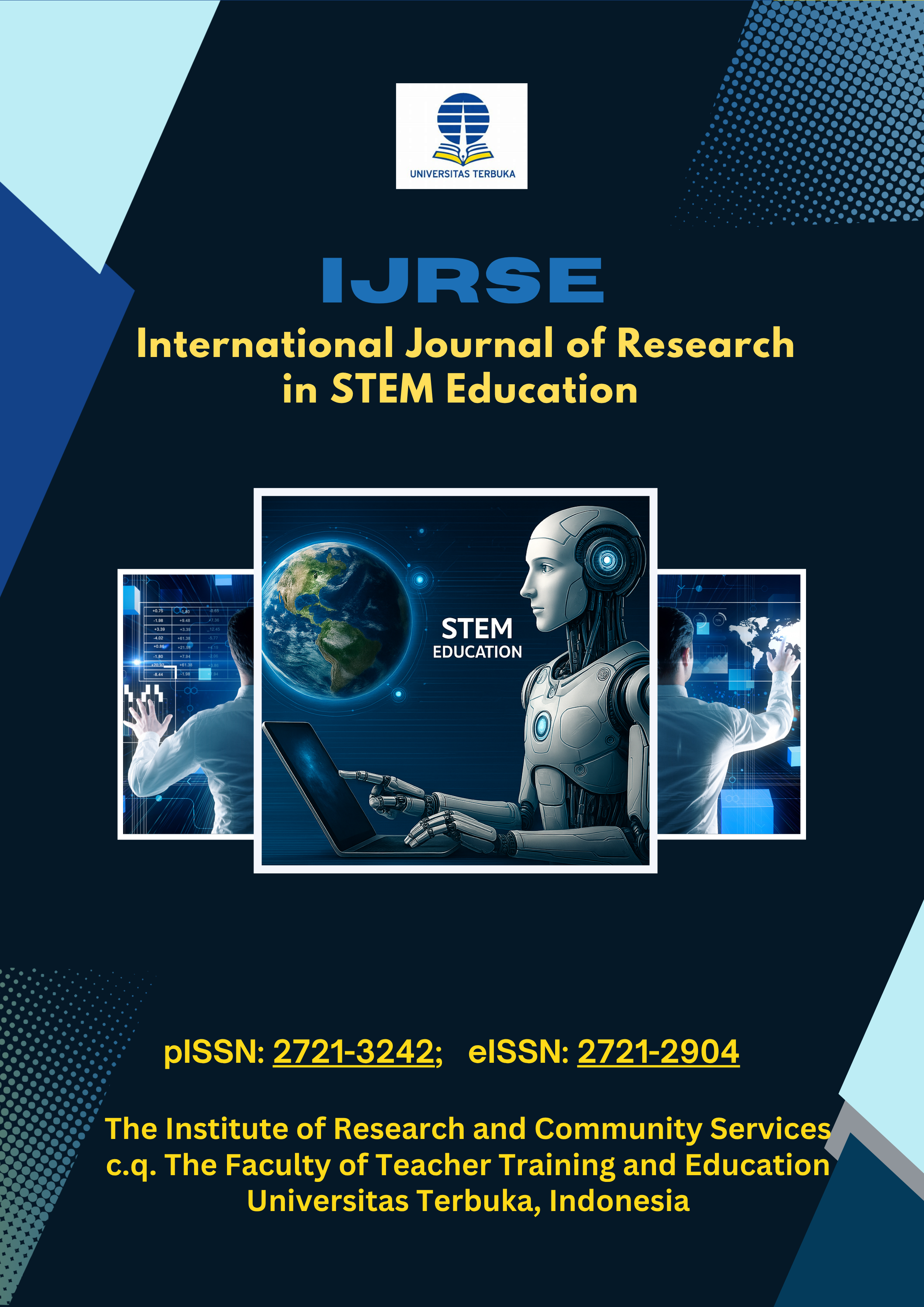STEM Students' Engagement in Horizontal Transfer from Calculus to Physics and their Difficulties
DOI:
https://doi.org/10.33830/ijrse.v3i1.503Abstract
Majority of science students are facing different problems in applying their calculus knowledge to physics courses. Researchers started to develop an integrated approach to address this problem however, many schools are still teaching calculus and physics as two separate subjects. Moreover, there has been no significant research on senior high school students' transfer of learning and difficulties in calculus-based physics subjects. It is crucial because this is when the students first experience applying calculus in a physics context. Hence, the study investigated the engagement of senior high school STEM students to horizontal transfer from Basic Calculus to General Physics subjects and the difficulties they experience in solving calculus-based-physics problems. A correlational study research design was employed to explore the relationship between the students’ physics and calculus performance using a physics worksheet. Both qualitative and quantitative methods were also employed to determine the difficulties of the students in calculus-based-physics problems. The Pearson correlation revealed that there is a significant positive correlation between the students’ physics and calculus performance. Although this could not serve as strong evidence of transfer, this strong correlation implies that senior high school STEM students were able to construct the similarities between the calculus-based physics problems and their calculus schema. As revealed in the questionnaire and the students’ responses in the worksheet and interview, students have difficulty in solving calculus-based physics problems in terms of identifying the variable that needs to be integrated, setting-up the limits of integration, evaluating the limits of integral, and identifying the appropriate rules of integration and applying it in solving the physics problem. These difficulties are rooted in the fact that students have little experience applying calculus in word problems, especially in the physics context.
Downloads
Published
How to Cite
Issue
Section
License
Copyright (c) 2021 Jerrie-Marie Q. Quimson

This work is licensed under a Creative Commons Attribution-NonCommercial 4.0 International License.
Content Licensing, Copyright, and Permissions
1. License
International Journal of Research in STEM Education (IJRSE) adopts the Creative Commons Attribution-NonCommercial 4.0 International License (CC BY-NC 4.0) as the optimal license for the publication, distribution, use, and reuse of scholarly works for non-commercial purposes.
The non-commercial use of the article will be governed by this license, which allows others to share and adapt the work provided proper attribution is given to the author(s) and the journal.
Creative Commons Attribution-NonCommercial 4.0 International License.
Creative Commons License: CC BY-NC 4.0
2. Author's Warranties
The author warrants that the article is original, written by the stated author(s), has not been published before, contains no unlawful statements, does not infringe the rights of others, is subject to copyright vested exclusively in the author, is free of any third-party rights, and that all necessary written permissions to quote from other sources have been obtained by the author(s).
3. User Rights
The International Journal of Research in STEM Education aims to disseminate published articles as freely as possible. Under the Creative Commons license, users are permitted to copy, distribute, display, and perform the work for non-commercial purposes only, provided that proper attribution is given to the author(s) and this journal.
4. Rights of Authors
Authors retain the following rights:
- Copyright and proprietary rights related to the article, such as patent rights.
- The right to use the substance of the article in future works (e.g., lectures, books).
- The right to reproduce the article for personal purposes.
- The right to self-archive the article.
- The right to enter into separate, additional non-exclusive contractual arrangements for the distribution of the article’s published version (e.g., posting to an institutional repository or publishing it in a book), with acknowledgment of its initial publication in IJRSE.
If the author has a non-exclusive publishing contract with another publisher under a more restrictive license, the author still retains all rights to republish or distribute the work elsewhere, including commercially, as the author is not bound by the license conditions imposed on the journal.
5. Co-Authorship
If the article has multiple authors, the signatory of this agreement warrants that he/she has been authorized by all co-authors to sign this agreement on their behalf and agrees to inform all co-authors of the terms of this agreement.
6. Termination
This agreement may be terminated by either the author or IJRSE with two months’ notice if the other party has materially breached this agreement and failed to remedy such breach within one month after receiving written notice.
No breach or violation of this agreement will cause automatic termination or affect the license granted to IJRSE.
7. Royalties
This agreement entitles the author to no royalties or other fees. To the extent legally permissible, the author waives the right to collect royalties in respect of any use of the article by IJRSE or its sublicensees.
8. Miscellaneous
IJRSE will publish the article (or have it published) once the editorial process has been successfully completed.
The journal reserves the right to edit the article for style, punctuation, spelling, capitalization, referencing, and consistency as deemed appropriate.
The author acknowledges that the article will be made publicly accessible, and such access will be free of charge for readers.








